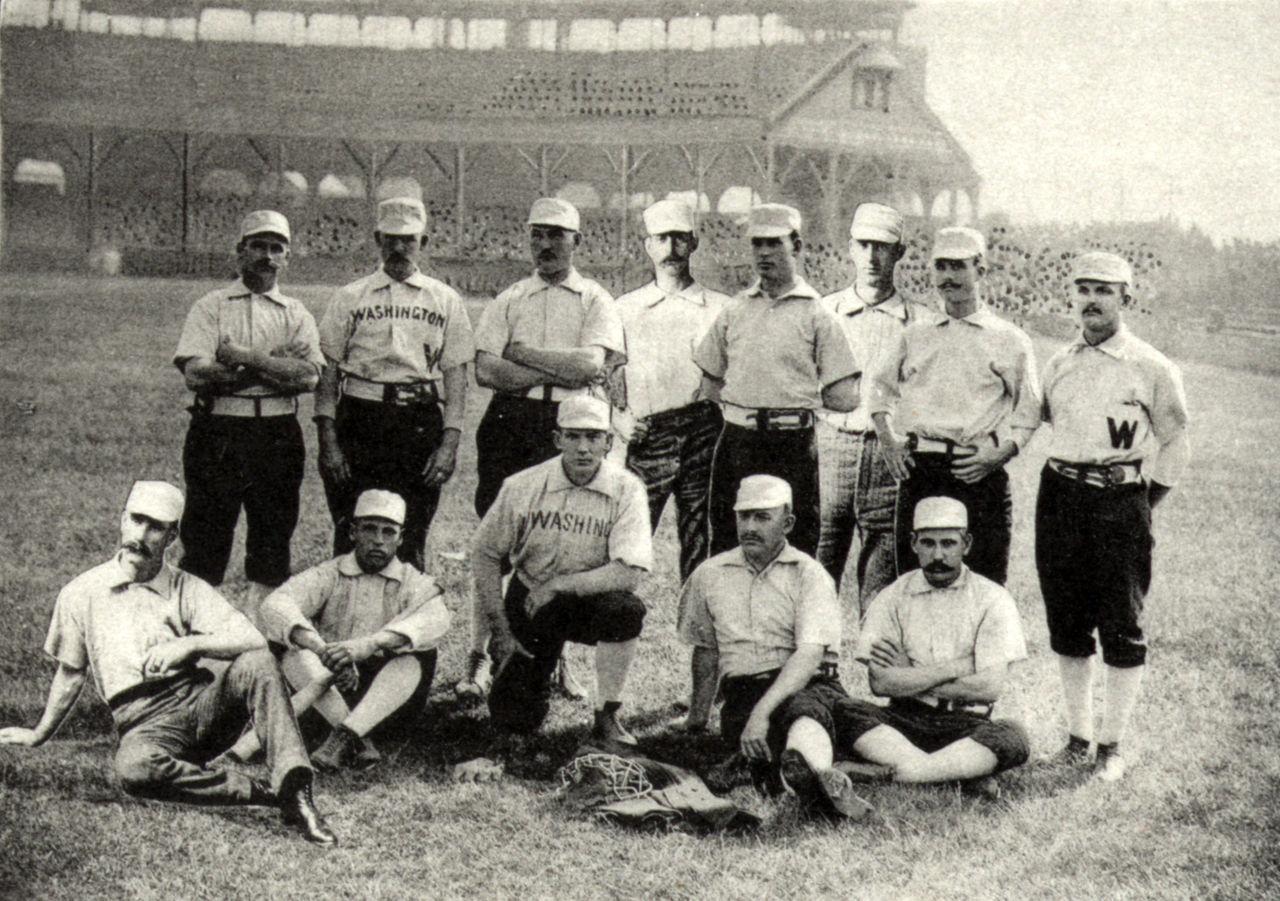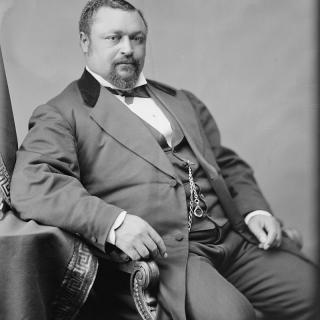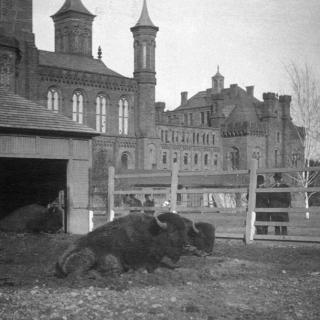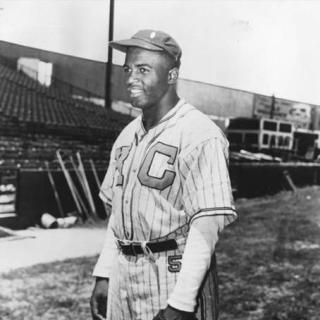1884: The Year of Two Nationals
Professional baseball has been part of life in Washington, D.C. (on and off) for almost 150 years. But 1884 sticks out as a particularly odd year.
In the 1880s, professional baseball was not nearly as organized as it is today. Competing leagues of various size and influence sprung up and folded left and right. In 1884, two leagues — the Union Association and the American Association — decided to expand to the nation’s capital. The District was suddenly in the bizarre position of having two baseball teams overnight — both called the Nationals. The two teams (let’s call them the Union Nationals and the American Nationals, to avoid confusion) never played one another, as interleague play was uncommon at the time. This was certainly a good thing for the fans’ sake. Even if the leagues were in regular competition, however, I’m inclined to believe that the owners wouldn’t have wanted to call attention to the ridiculousness of the situation.
The Union Nationals played at Capitol Grounds, a field just two blocks from the Capitol Building (where the Russell Senate Office Building stands today). Because of the short distance between them, some spectators watched games from the Senate wing of the Capitol.[1] Capitol Grounds seemed to give the Union Nationals an enormous home-field advantage: they only won 11 away games all season, compared to 36 at home.
Nevertheless, the season was a disaster for the Union Nationals. Newspapers often referred to their pitchers being “batted out of the box,” meaning that they were forced to retire to the dugout in disgrace after letting in an inordinate amount of runs.
The Baltimore Sun offered the following appraisal of one particularly disastrous game against the Baltimore Monumentals, which the Nationals lost 18-1:
The Washington players became demoralized about the fourth inning, and afterwards changed about and played like school-boys...Voss was then transferred from first base to the pitcher’s box, and [Washington pitcher] McKenny went behind the bat to catch. Voss was also batted furiously and frequently, and as the outfielders were making a succession of miserable errors a general panic seized upon the blue uniforms and tarried there.[2]
The factoid that really sums up the depths of Washington’s ineptitude is that they were defeated three times by the Altoona Mountain Citys, also known as the “Altoona Unfortunates.” This constituted half of Altoona’s wins in the history of their club.
The Union Nationals’ manager, Mike Scanlon, had built up high hopes for the team, saying that they would be a baseball team to contend with the best of them.[3] Clearly, his hopes remained unrealized. Scanlon would run several future generations of Washington Nationals into the ground as well, making similar promises before each new franchise.
The American Nationals, if anything, were worse when they took the field at Athletic Park at 9th and T St., NW. Like the Union Nationals, their backer, Mr. L. Moxley, promised great things for them, saying, “We are going to have a genuine base ball revival this season.”[4]
These high expectations, however, didn’t stop the American Nationals from sailing under the bar. By late April, the Evening Star’s coverage of them seemed resigned, if anything. A phrase which frequently showed up in game reports was “The home nine neither batted nor fielded well.”[5] Their best pitcher — by far — was Bob Barr, with a 9-23 record. No other pitcher managed more than two wins.[6] They didn’t tend to let in as many runs as the Union Nationals did, but this was because the American Association only played seven-inning games at the time.[7]
These Nationals wound up folding before their first season even ended, with a final record of 12 wins and 51 losses.[8] Their manager, Holly Hollingshead (really), quit one game before the team did, leaving them leaderless.[9] John A. Bickerton managed their last game on Aug. 2, 1884, which, of course, they lost, 6-5.[10]
After a few years away, the American Association would return to the District with a franchise called the Washington Statesmen in 1891. Following the season, the league folded and the D.C. franchise rebranded itself as the Washington Senators and played in the National League until 1899. Two years later, another club called the Senators opened play in the American League, where Washington would be represented — generally at the bottom of the standings — until 1971. All the more reason to take pride in the Washington Nationals 2019 World Series victory!
More information
Here's a rundown of the District’s eleven ill-fated professional baseball squads, in chronological order:
- Washington Olympics (1871-1872) - National Association
- Washington Nationals (1872) - National Association
- Washington Blue Legs (1873) - National Association
- Washington Nationals (1875) - National Association
- Washington Nationals (1884) - Union Association
- Washington Nationals (1884) - American Association
- Washington Nationals (1886-1889) - National League
- Washington Statesmen/Senators (1891-1899) - American Association/National League
- Washington Senators (1901-1960; now the Minnesota Twins) - American League***
- Washington Senators (1961-1971; now the Texas Rangers) - American League
- Washington Nationals (2005-present; this franchise spent 1969-2004 as the Montreal Expos) - National League
***Just to make things confusing, the 1901-1960 version of the Senators was often referred to by the name Nationals around town and in the press. The Washington Post's John Kelly addressed this confusing tidbit in 2012.
In addition to the above, Washington also boasted several negro league baseball teams during the first half of the 20th century:
- Washington Potomacs (1923-1924) - Eastern Colored League
- Washington Pilots (1932) - East West League
- Washington Elite Giants (1936-1937) - Negro National League
- Washington Black Senators (1938) - Eastern Colored League
- Washington Homestead Grays (1939-c.1950) - Negro National League
The Homestead/Washington Grays, which split time between Washington and Pittsburgh, were perhaps the most successful franchise to call Washington "home," winning the Negro League World Series in 1943, 1944, and 1948.
Footnotes
- ^ “Base-Ball: A Bad Defeat for the Baltimores at Oriole Park - Games Elsewhere,” Baltimore Sun, April 19, 1884, p. 4.
- ^ “Base-Ball: Two Victories for Baltimore - Games Elsewhere,” Baltimore Sun, April 22, 1884, p. 4.
- ^ http://www.baseball-reference.com/teams/WHS/1884.shtml
- ^ “The Washington Nine,” Evening Star, January 22, 1884, p. 4.
- ^ “Base Ball Yesterday,” Evening Star, April 22, 1884, p. 4.
- ^ http://www.baseball-reference.com/teams/WAS/1884.shtml
- ^ “Base Ball Yesterday,” Evening Star, April 22, 1884, p. 4.
- ^ http://www.baseball-reference.com/teams/WAS/1884.shtml
- ^ http://www.baseball-reference.com/teams/WAS/1884.shtml






![Sketch of the mythical fuan by Pearson Scott Foresman. [Source: Wikipedia]](/sites/default/files/styles/crop_320x320/public/2023-10/Goatman_Wikipedia_Faun_2_%28PSF%29.png?h=64a074ff&itok=C9Qh-PE1)












